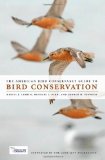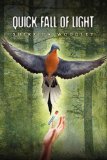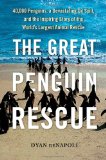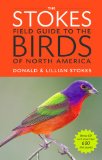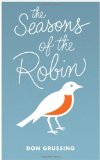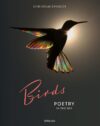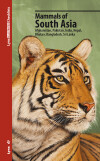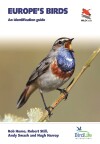2010 was a good year for bird field guides. The highlights include new editions of the most famous field guide in history, a great new field guide for North America, a real field guide to the world’s most avian-rich country, and what was arguably the most highly anticipated field guide update ever (at least since I’ve been birding). Here’s a brief look at the field guides from this past year.
It seemed like there were an unusually high number of new editions and updated field guides in 2010, most of which were published, at least in the U.S., by Princeton University Press.

The Collins Bird Guide, or Birds of Europe
as it’s known in North America, is probably the most highly regarded field guide in the world; and deservedly so. Every birder, regardless of location, should have a copy, if only to see how good a field guide can be. But the original edition (review), published a decade ago, was starting to show its age. This second edition makes some updates and additions, but is still the same amazing guide.

The new Birds of Peru
is billed as a “Revised and Updated Edition” rather than a second edition. I don’t have the first edition to compare the two, but I think this is an accurate reflection. The binding has been changed from a jacketless hardcover to paperback, making it more portable. It also includes an additional 25 species, and some revised range maps. Anyone birding in Peru or the surrounding countries absolutely has to have it. Full Review

In 2008 the famous Peterson field guides, which had previously only been available as separate regional editions, were updated and combined into a single book (review). It should come as no surprise that they were again split into the sixth edition Eastern and Central North America
and fourth edition Western
field guides.

Australia was blessed with two updated field guides in 2010: the eighth edition of Simpson and Day’s Birds of Australia
, and the second of The Slater Field Guide to Australian Birds
. If you’d like to learn the relative merits of each of Australia’s field guides, there is an excellent comparison on Birdforum.

The second edition of Birds of the Middle East
looks like it would be a very useful field guide for the region. I don’t have the first edition, so I can’t compare the two. But it sounds as if this guide has been completely redesigned and updated, much of it for the better. It now has a more traditional layout with birds on the right-hand page and text and range maps on the left.
But there was also a good selection of new field guides in 2010.

Each of the last four years has brought us a new photographic field guide to the birds of North America. They’ve each had their merits, but The Stokes Field Guide to the Birds of North America
is my current favorite photo-based guide. It is an excellent reference that is worth having even if you already have a dozen other NA field guides. Here’s a look inside.
 Of all the field guides published in 2010, Field Guide to the Birds of Colombia may be the most impactful. Columbia, which boasts more bird species than any other country on Earth, is once again becoming a safe place to bird. But until now, its only field guide, while good, is old and unwieldy. I’m still not sure what magic the authors used, but they managed to produce a guide to 1800+ birds that is both useful and very portable. Full Review
Of all the field guides published in 2010, Field Guide to the Birds of Colombia may be the most impactful. Columbia, which boasts more bird species than any other country on Earth, is once again becoming a safe place to bird. But until now, its only field guide, while good, is old and unwieldy. I’m still not sure what magic the authors used, but they managed to produce a guide to 1800+ birds that is both useful and very portable. Full Review

Birds of the West Indies
is a very compact guide to Caribbean birds. But it doesn’t completely supplant its predecessor, a field guide with the same name by Herbert Raffaele. Having been able to use this guide in the field recently, I will be writing a review shortly.

The Birds of Panama
, like the new Columbian guide, is a very welcome addition since it’s the first good, readily portable field guide to this popular birding destination. I haven’t seen it yet, but if it’s as good as the companion book to Costa Rica (by the same publisher and illustrator), it would be highly recommended to anyone birding in Panama.

According to the very helpful site Avian Review, the Field Guide to the Birds of Ghana
, as only the second field guide to west Africa, is a book that you’ll need if you’re planning on birding in western Africa.

Bird Feathers: A Guide to North American Species
isn’t a field guide in the same manner as these other books, but is rather a field guide to bird parts. Ever find a lone bird feather and wish you could figure out to which bird it belonged? This is your book.
If I’ve missed any, and inevitably I have, let me know and I’ll add them.

